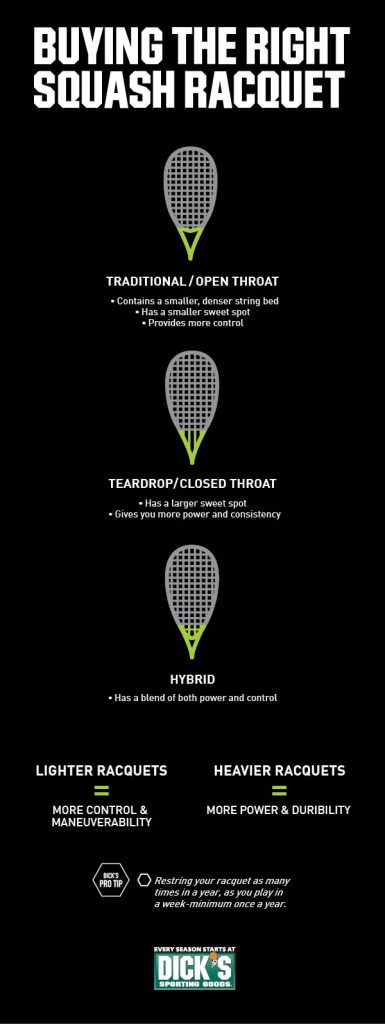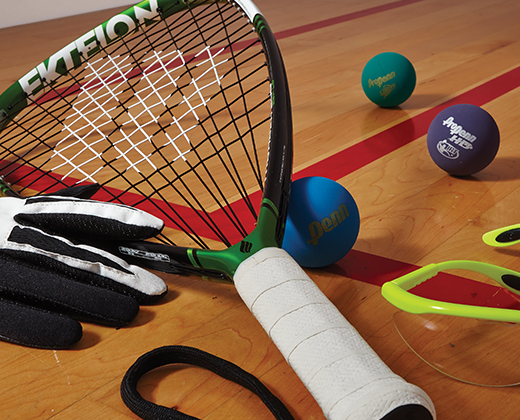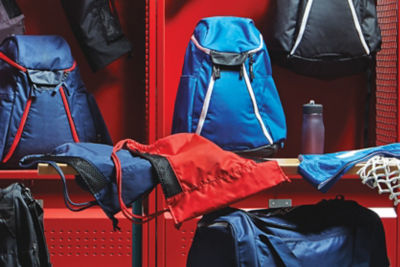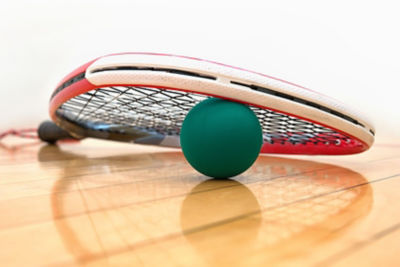How To Buy A Squash Racquet
Learn about weight, grip and stiffness considerations to find the squash racket that’s right for your playing style.
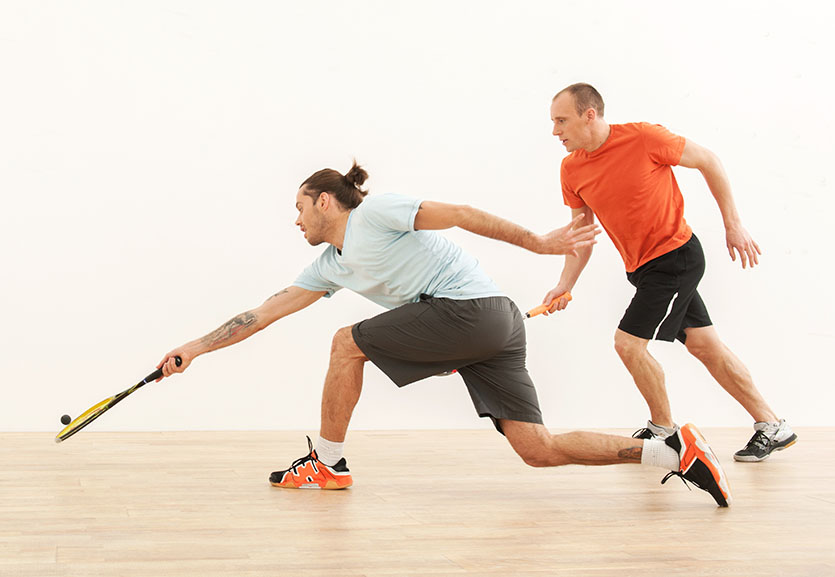
Choosing the right squash racquet can seem like a challenge, but we are here to help you find the right racquet for the next time you take the court.
WEIGHT
The average racquet weight is between 140 and 170 grams, with the lightest available weight at 115 grams. Most players prefer a mid-weight, evenly balanced racquet.
- The location of a racquet’s center of gravity can vary greatly. When held by the handle, a head-heavy racquet will feel heavy overall, while a head-light racquet will feel light overall.
- Lightweight racquets are favored by experienced, aggressive players for their maneuverability. They require a powerful swing because they deliver less force, but a slightly head-weighted model may compensate for this.
- Because of the enhanced feel and easy swing, control and touch players, juniors, and women often use lightweight racquets. These players should choose a slightly head-weighted model if they cannot deliver a powerful swing.
- Heavier racquets deliver a powerful swing, but are not as easy to control.
- Avoid racquets that are overly head-heavy or head-light
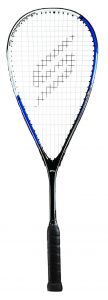
SIZE & GRIP
Though you should avoid racquets that are uncomfortably head-heavy, larger heads provide a larger sweet spot. A customized grip can also help you balance out the extra weight of a larger head.
- Racquets with a narrow profile, or beam width, are flexible with a maneuverable feel.
- A wide-profile racquet offers increased power and a larger sweet spot.
- Novices should choose a mid-profile racquet that balances power and control.
- Every player has an individual preference for grip feel. If you play with regularity, expect to perform some modifications to your grip to attain maximum comfort.
- Grip modifications are as minimal as adding some extra tape around the butt, to building it up in certain areas to contour to your hand. Tape, gauze, and towels have all been used to customize the grip of squash racquets.
- Talk to other players for tips on how to customize your grip.
STRINGING
Squash players have some control over how the racquet plays by adjusting the stringing. High-quality multifilament set at the proper tension offers desirable precision and power.
- Look for textured, multi-filament, 17 or 18-gauge strings specifically designed for squash.
- Proper string tension is also important; 28 PSI is average.
- Increased tension improves touch; decreased tension improves power.
- Restring your racquet whenever fraying becomes noticeable.
- Regular players will need to restring approximately every 2 months to maintain reliable, effective tension.
STIFFNESS
Traditional stiff wood squash racquets have given way to innovative fiberglass models. Today’s racquets are made of reinforced fibers and metals for controlled give an non-brittle rigidity.
- The more "whippy" or flexible, the racquet the easier it is to control.
- More experienced players who can control a stiffer racquet may find that is is better for power and shot making.


